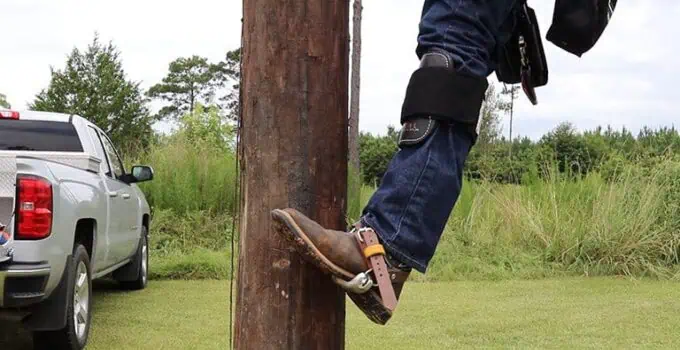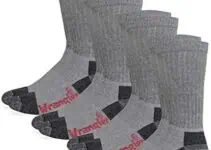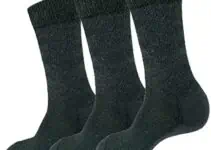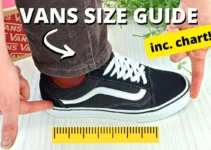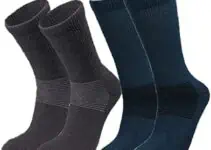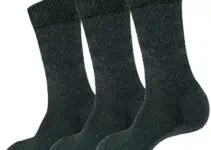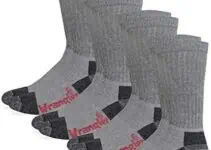Lineman boots are essential gear for electrical workers, providing safety and comfort in challenging environments. At BootsGuru.com, we understand the critical role these boots play in protecting linemen from electrical hazards and other job-related risks.
This guide will walk you through the key features to look for, top brands to consider, and how to ensure the perfect fit for your lineman boots. Whether you’re a seasoned professional or just starting your career, choosing the right footwear is crucial for your safety and performance on the job.
What Makes a Great Lineman Boot?
Lineman boots are specialized tools designed to keep you safe and comfortable in one of the most dangerous professions. We’ve analyzed numerous boots and consulted experienced linemen to identify the key features that truly matter.

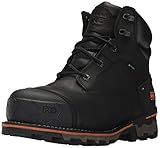






Electrical Hazard Protection: Your First Line of Defense
Electrical hazard (EH) protection is essential for lineman boots. Search for boots that meet or exceed ASTM F2413-18 standards. These standards outline three levels of protection safety toes can provide: protection against 75 foot-pound impacts, 50 foot-pound impacts, and 30 foot-pound impacts. EH protection serves as a secondary safety measure and should never replace primary protection against electrical hazards.
Toe Protection: Steel vs. Composite
Steel toes have been the traditional choice, but composite toes are gaining popularity. They’re lighter and don’t conduct heat or cold like steel. Both materials must meet ASTM standards for impact and compression resistance. Steel toes offer slightly better protection against heavy falling objects, while composite toes excel if you frequently pass through metal detectors.
Ankle Support: The Tall Shaft Advantage
A tall shaft (typically 8 inches or higher) provides vital ankle support when climbing poles or navigating uneven terrain. It also offers additional protection against cuts and abrasions. Try to find boots with reinforced heel counters and padded collars for extra stability and comfort.
Outsole Durability: Standing Up to Tough Conditions
Lineman boots need outsoles that can handle anything. Vibram soles are a popular choice due to their excellent traction and durability. Look for deep lugs and oil-resistant properties. Some brands offer puncture-resistant outsoles that can stop a nail penetrating at 270 pounds of pressure.
Waterproofing and Breathability: Comfort in All Conditions
Working outdoors means dealing with unpredictable weather. Gore-Tex linings offer excellent waterproofing while allowing your feet to breathe. A breathable Gore-Tex membrane helps keep your feet dry in damp weather. Full-grain leather uppers treated with water-resistant coatings provide additional protection. Some boots use a combination of waterproof leather and breathable linings to keep your feet dry and comfortable all day long.
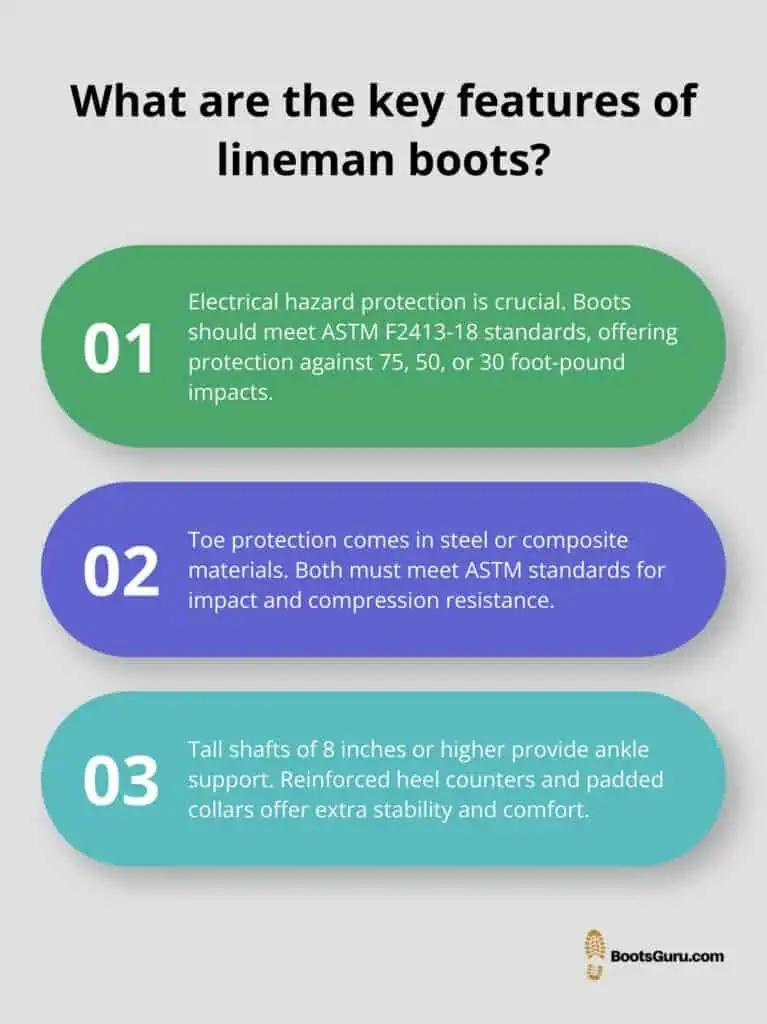
lineman boots features
When selecting lineman boots, prioritize these essential features. Your safety and comfort depend on it. While many great options exist, boots that combine all these features offer the best overall protection and performance for linemen. Now that we’ve covered the key features, let’s explore some of the top lineman boot brands and models in the market.
Top Lineman Boot Brands for Safety and Comfort
When it comes to lineman boots, certain brands consistently deliver exceptional quality and performance. We’ve analyzed customer feedback, industry reputation, and key features to bring you a curated list of top-tier options.
- 10" tall leather uppers made from 2.8 mm full grain leather feature double and triple stitching throughout for added durability
- Featuring our new custom K-73 Outsole, which offers a deep, open tread pattern with 360 degrees of traction teeth and lugs and a solid, extremely durable one-piece vulcanized rubber sole
- Forged boot hardware offers corrosion resistance and swivels instead of breaking
- Durable Windtex waterproof membrane and no insulation keeps you dry and lets you focus on the job at hand
- Steel safety toe meets ASTM impact and compression safety standards
- COMP TOE PROTECTION ensures safety and durability in every work boot
- WATERPROOF CONSTRUCTION keeps your feet dry and comfortable in any work boot
- SLIP-RESISTANT OUTSOLE ensures stability on any surface with these rugged work boots
- MAXIMUM COMFORT from the boot's cushioned insole for all-day wear
- BREATHABLE LINING keeps your feet cool and comfortable throughout the day
- Waterproof work boot featuring protective steel toe and lace-up closure
- Logo patch at tongue
- Rear pull loop
- Abrasion-resistant rubber outsole
- 8 Inches in height and Weightis 6.1 pounds per pair for a size 10
Red Wing: A Legacy of Durability
Red Wing’s lineman boots stand out for their rugged construction and longevity. Their 2416 model features a 16-inch tall shaft for superior ankle support and protection. The Goodyear welt construction allows these boots to be resoled, which extends their lifespan significantly. Many linemen use a single pair of Red Wings for 5-7 years with proper care.
Thorogood: American-Made Excellence
Thorogood’s American Heritage line offers lineman boots that combine traditional craftsmanship with modern technology. Their 804-4208 model includes a fiberglass shank for stability and a removable shock-absorbing footbed. A standout feature is the MAXWear Wedge outsole, which provides excellent traction.
- AMERICAN MADE with USA and globally sourced components by the skilled craftsmen and women at Thorogood’s US plants
- DURABLE FULL-GRAIN LEATHER BOOTS in Thorogood’s moc toe work boot design are both comfortable and hold up to punishing jobs. Available in Tobacco (804-4200), Trail Crazyhorse (804-4575), and Midnight Black (804-6201)
- STEEL TOE BOOTS FOR MEN protect your feet from on-site impact and compression hazards while the design keeps them light and flexible, making American Heritage some of the best safety toe boots for men with dangerous jobs. Meets ASTM F2413-18 safety toe standards
- MAXWEAR WEDGE TRACTION OUTSOLE flexes better than other work boot outsoles, absorbing impacts and protecting your feet and ankles while working on difficult surfaces, keeping you on your feet even on loose gravel and wet and oily surfaces. Meets ASTM F3445-21 slip-resistance standards
- EH RESISTANCE - these MAXWear Wedge work boots meet ASTM F2413-18 electrical hazard resistance safety standards
Carolina: Affordable Quality
Carolina boots strike a great balance between affordability and performance. Their CA1905 model (particularly popular among apprentice linemen) features a steel toe, electrical hazard protection, and a waterproof SCUBALINER. At a price point often under $200, these boots provide excellent value without compromising on essential safety features.
- Waterproof work boot featuring protective steel toe and lace-up closure
- Logo patch at tongue
- Rear pull loop
- Abrasion-resistant rubber outsole
- 8 Inches in height and Weightis 6.1 pounds per pair for a size 10
Wesco Highliner: The Premium Choice
For those who want to invest in top-of-the-line footwear, Wesco Highliners are hard to beat. These boots are fully rebuildable, with many linemen reporting 10+ years of use from a single pair. The 10-inch height provides ample support, while the brass studs and hooks ensure a secure fit. At around $500, they represent a significant investment, but their longevity makes them cost-effective in the long run.
Hoffman Boots: Specialized Lineman Solutions
Hoffman Boots focuses exclusively on lineman and logging footwear, which results in highly specialized designs. Their Powerline Series features a unique 90-degree heel breast, specifically engineered for climbing poles. The boots also incorporate a steel side plate in the arch area, which provides extra support when standing on pegs or rungs for extended periods.
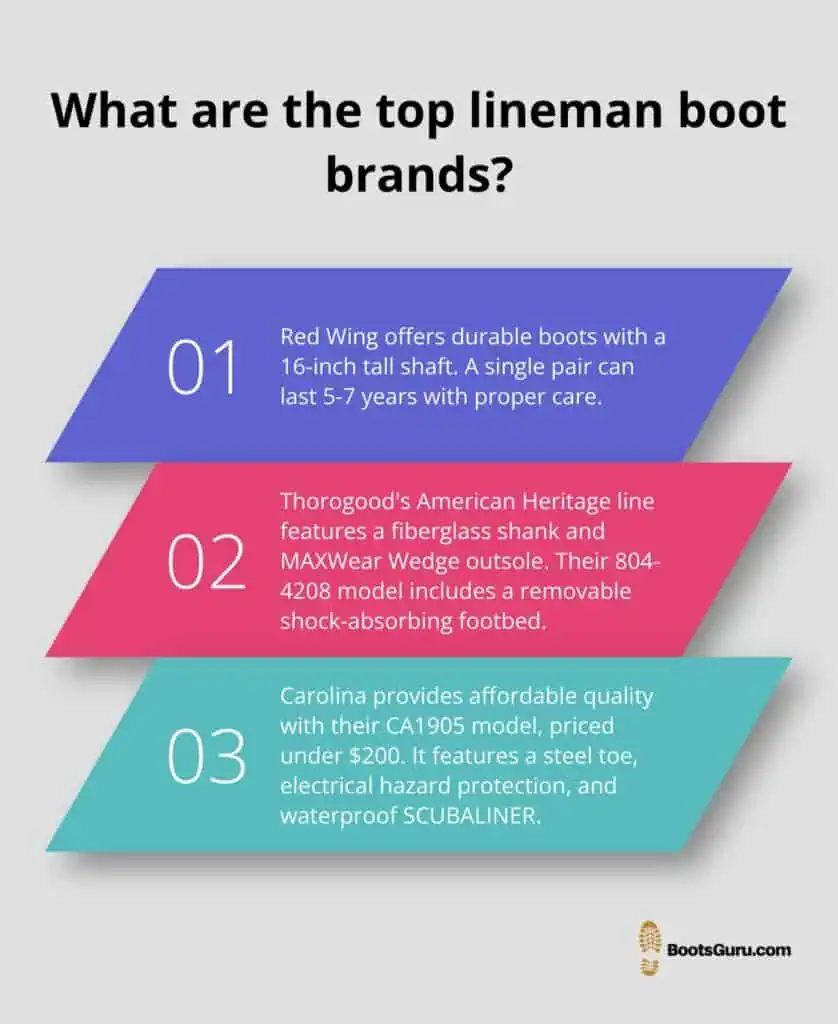
lineman boots brands
While these brands consistently produce high-quality lineman boots, the best boot for you depends on your specific needs, foot shape, and working conditions. Always prioritize proper fit and required safety features over brand name alone. Now that we’ve explored some top brands, let’s move on to discuss how to ensure the perfect fit and maximize comfort in your lineman boots.
How to Achieve the Perfect Fit for Lineman Boots
The right fit for your lineman boots ensures safety, comfort, and performance on the job. Ill-fitting boots can cause blisters, fatigue, and increase accident risks. Follow these guidelines to find boots that fit like a glove.
Accurate Sizing
Measure your feet at the end of the day when they’re slightly swollen. Use a Brannock device for precision. The Genuine Brannock Foot-Measuring Device is designed to indicate the correct shoe size, which is the first step in the fitting process. Boot sizes often vary between brands (e.g., a size 10 in Red Wing might differ from a size 10 in Thorogood).
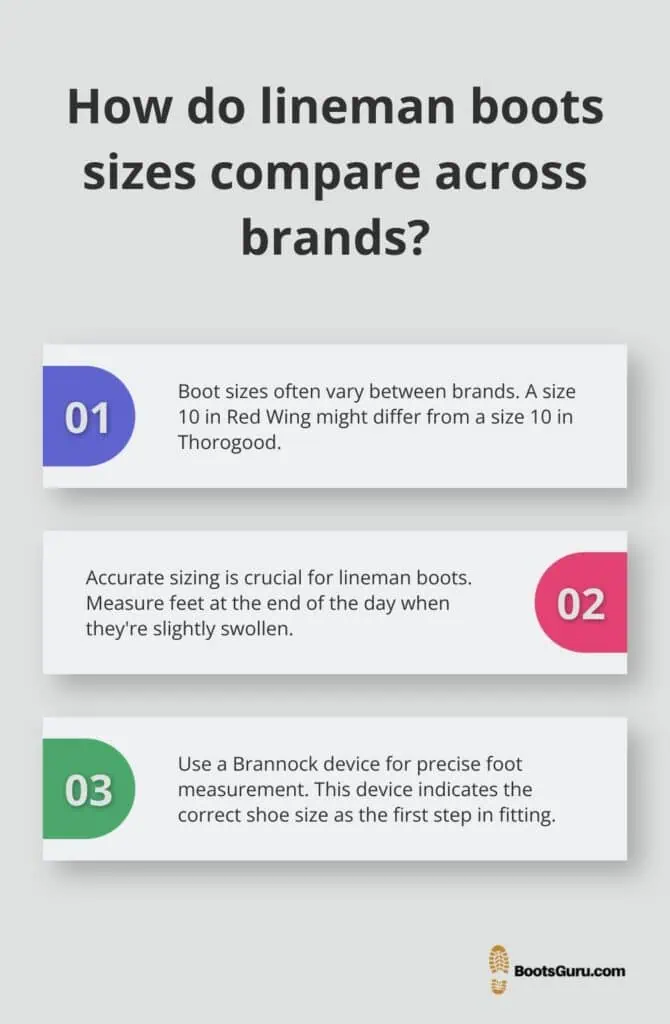
lineman boots size
Try on boots with the socks you’ll wear at work. Thick work socks can significantly affect fit. Leave about a thumb’s width of space between your toes and the boot’s end to allow for natural foot swelling during long shifts.
Effective Break-In Methods
New lineman boots typically require a break-in period. Wear them around the house for short periods initially. Increase wear time gradually over one to two weeks. Some linemen prefer the “hot water method” – soaking boots in hot water, wearing them until dry, then applying leather conditioner. (Check with the manufacturer first, as this can void some warranties.)
To expedite the break-in process, focus on flexing the boot at the ball of the foot. This area experiences most bending during climbing and walking. A boot stretcher can help soften stiff leather in problem areas.
Comfort Customization
Stock insoles don’t always provide adequate support. Aftermarket insoles can improve comfort and reduce fatigue significantly. Brands like Superfeet and Tread Labs offer insoles with varying arch heights to match your foot shape.
For heel slip issues, try the “surgeon’s knot” lacing technique. Create a locking loop at the ankle to keep your heel firmly in place. The “window lacing” method can relieve pressure on the sides of wide feet.
Resolving Common Issues
Hot spots and blisters often occur during break-in. Apply moleskin or athletic tape to problem areas before they become painful. For persistent discomfort in specific areas, consider having a cobbler stretch those parts of the boot.
If boots feel too tight across the top of the foot, experiment with different lacing patterns. Skip the first set of eyelets or use the “parallel lacing” technique to reduce pressure.
Professional Fitting Services
Many reputable work boot retailers (including BootsGuru) offer professional fitting services. These experts can assess your foot shape, work requirements, and recommend the best boot models and sizes for your needs. They can also suggest custom insoles or orthotics if necessary.
Final Thoughts
Choosing the right lineman boots impacts your safety, comfort, and job performance. High-quality boots offer essential features like electrical hazard protection, sturdy toe safety, and durable outsoles. These boots may cost more upfront, but their longevity and protective qualities make them a smart investment for your career and well-being.
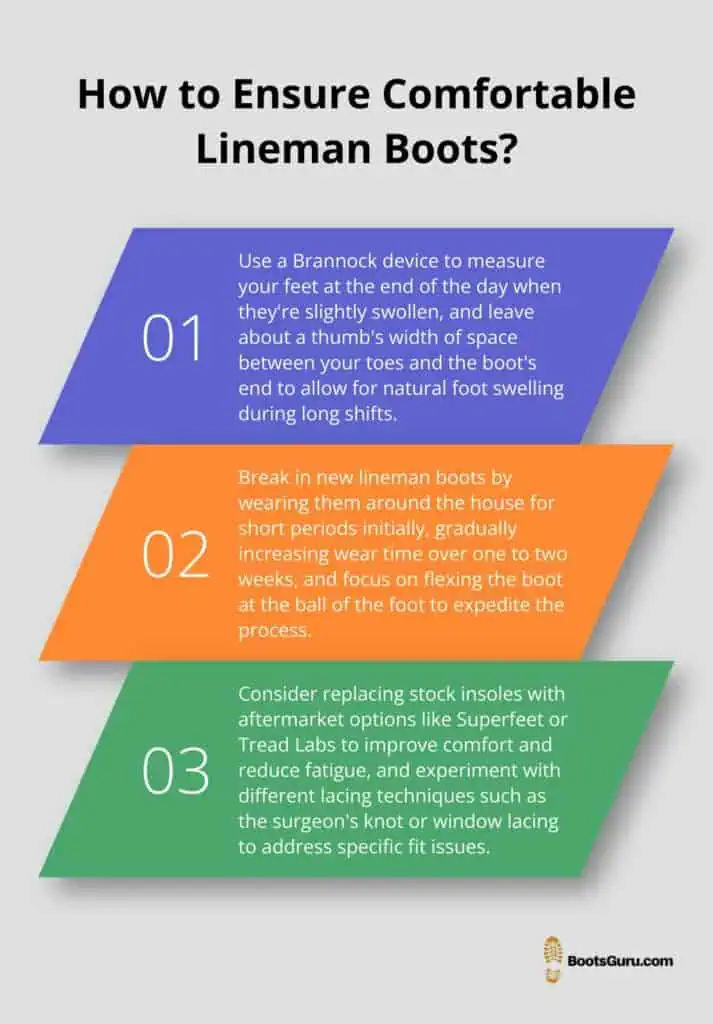
lineman boots comfortable
When selecting lineman boots, prioritize safety features that meet or exceed industry standards. Focus on proper fit and comfort, as even the most advanced boots won’t serve you well if they don’t fit correctly. Take time to break in your new boots gradually, and consider customizing them with aftermarket insoles if needed.
BootsGuru understands the unique challenges faced by linemen who rely on their footwear for safety and performance. Our expert recommendations help you find the perfect work boots for your specific needs. Quality lineman boots protect you from electrical hazards, provide stability on poles, and keep you comfortable during long shifts.

